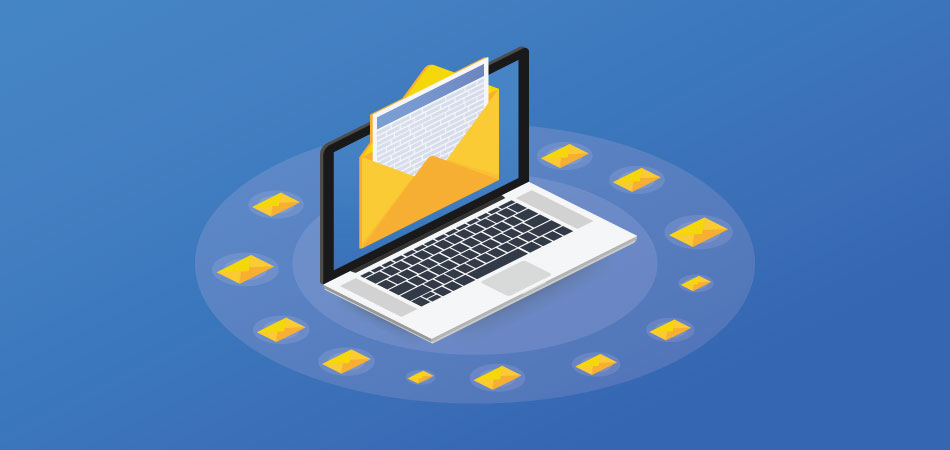Strategic email marketing keeps employees engaged, motivates professional success and encourages them to stay with your company for the long-haul. What are you doing to keep your employees engaged?

More than ever, employees are trading job stability for satisfaction and fulfillment. Staffing firm Robert Half reported that, “The majority of workers — 64 percent — favor job-hopping.” Why is this, and what can you do about it? Start by making sure you are authentically communicating with your employees. A great first step is to create a robust email marketing campaign that keeps employees in the loop, highlights success and inspires excitement about the future. But first, it’s important to understand why employees leave.
Reasons why employees may leave within two years:
- Job-hopping is becoming part of the culture. Millennials in particular are finding that raises and promotions within a company are increasingly difficult to come by and end up feeling forced to leave in order to receive raises and get recognition.
- The workplace turns out to be a poor culture fit. It’s not always easy to get plugged-in socially at a new workplace and a lack of outreach from existing team members could leave newbies feeling isolated.
- Today’s workers value job satisfaction over stability. Companies fall short when it comes to keeping employees plugged into a larger purpose. A Forbes article shares that in order for employers to provide the purpose employees need to stay, they should:
- Create a company vision
- Show recognition
- Express gratitude
- Let employees know how their job impacts the company and its clients
- Frequently discuss the meaning and value of the company
- Share customer success stories
- Communicate big picture goals
Creating an email marketing plan that takes employees all the way through the life cycle at your company has the potential to increase retention, improve job satisfaction and inspire increased productivity.
6 email marketing campaign tactics to keep employees engaged:
1. Create categories. Creating categories to drive email content is essential. This will help your team save time and learn what’s most interesting to your staff. Here are a few categories you could try:
-
- Company news. Share positive news on mergers, expansion or renovation plans and any accolades the company may have received.
- Employee recognition. Highlight employees who have surpassed goals, worked long hours during a big project launch or are celebrating important life events like marriage, parenthood or retirement. Birthday and work anniversary emails are easy to automate and have a big impact.
- Service activities. Include opportunities for employees to give back to the community. This is especially meaningful if employees get to recommend and dedicate time toward volunteer opportunities they care about.
- Benefit updates. If your company expands its benefits, let employees know so they can get the most out of their package.
- Professional development. Share professional development opportunities as often as possible. The more your employees learn, the more likely they are to position themselves for upward mobility within the company. And providing internal opportunities for career growth all but guarantees productivity and retention.
- Events and outreach. Remind employees about work events both on and off campus. Provide as many opportunities as possible for employees to feel connected to their work community and engaged with the culture.
2. Email often. Executive team members are constantly getting updated about company wins and losses, future plans and interesting news about competitors. This information rarely trickles down to the staff who probably need to hear it most. Send all-staff emails weekly, bi-weekly or monthly (depending on the size of your company) to keep staff updated and engaged with the company.
3. Make it easy. Create a standard, easy-to-navigate email template that organizes content the same way every time. This will make it easy for employees to scroll down to the section that most interests them.
4. Bring value. Make sure each email includes something of benefit. While professional development opportunities may not be top priority for some, the culture and volunteer opportunities might be at the top of the list for others.
5. Measure and adjust. Create trackable links for each section of email content so your team can measure which type of content is the most interesting to staff.
6. Ask questions. Be sure to include a section in each email that invites team members to reach out with questions, concerns and ideas. Employees who believe they have a vote because their voice is heard are likely to stay engaged for longer than those who don’t.
Keep your eye on the prize. Employee retention is the #1 reason to send internal emails to all staff on a consistent basis.
Retaining employees means less time and money spent on recruiting and on-boarding, and that could mean big things for your company’s bottom-line.
Keeping employees engaged by offering them the content they care about that recognizes their interests is key for improving employee retention and keeping them motivated. We can help you create internal communication strategies that will engage and inform your employees.